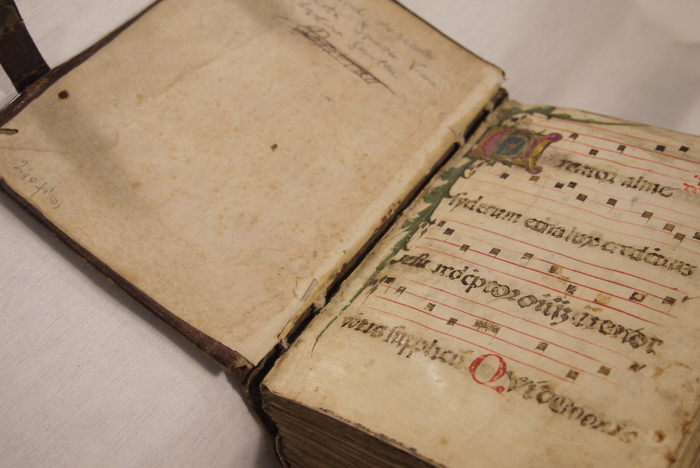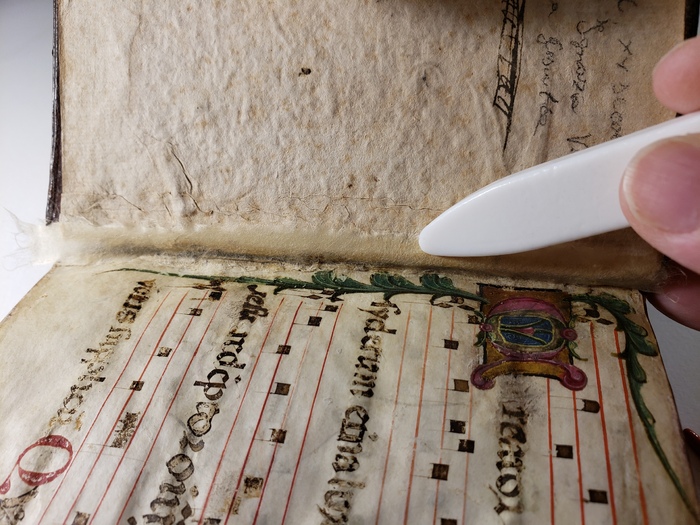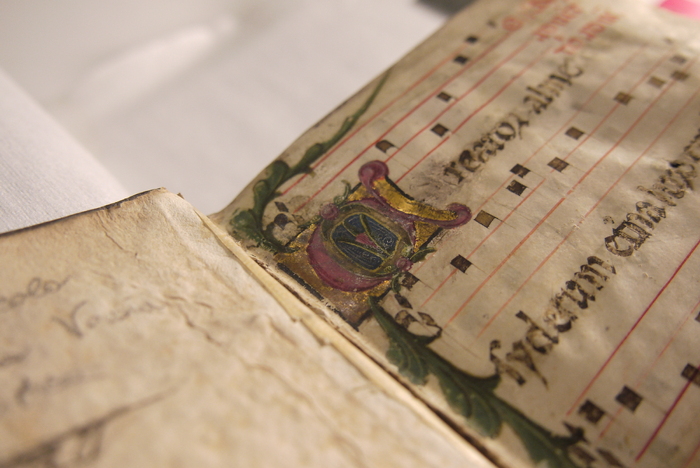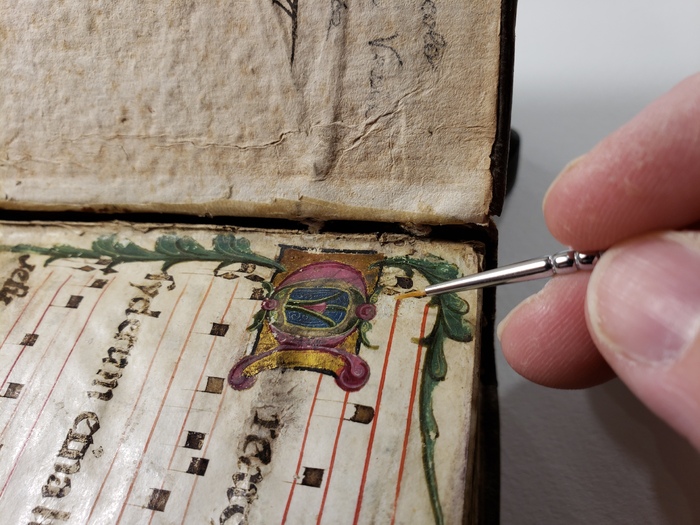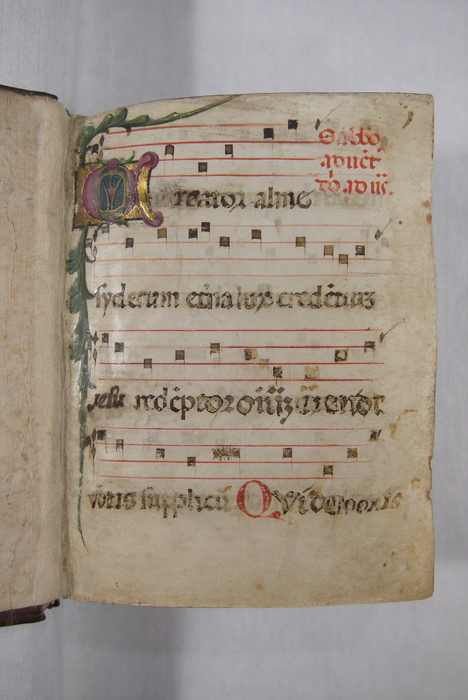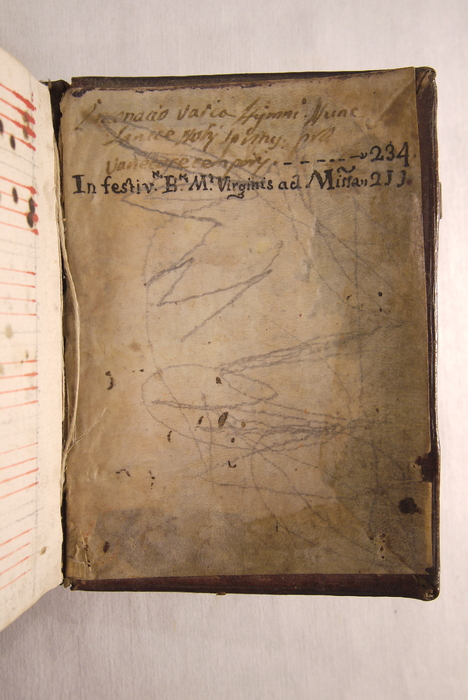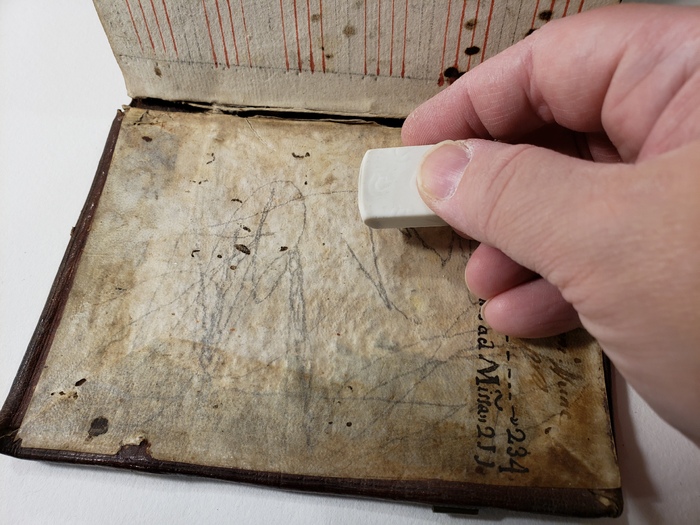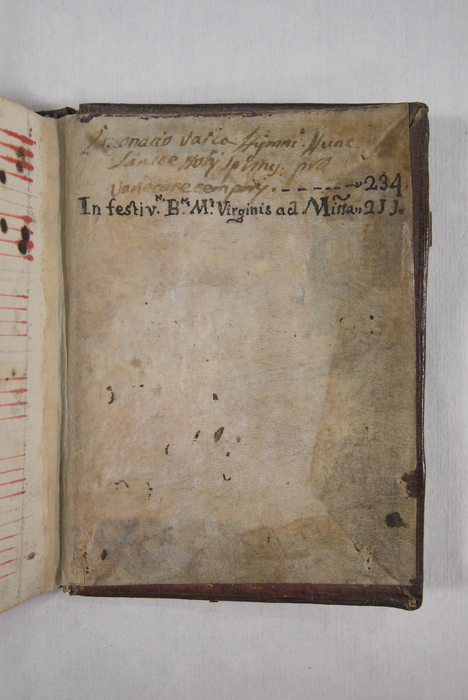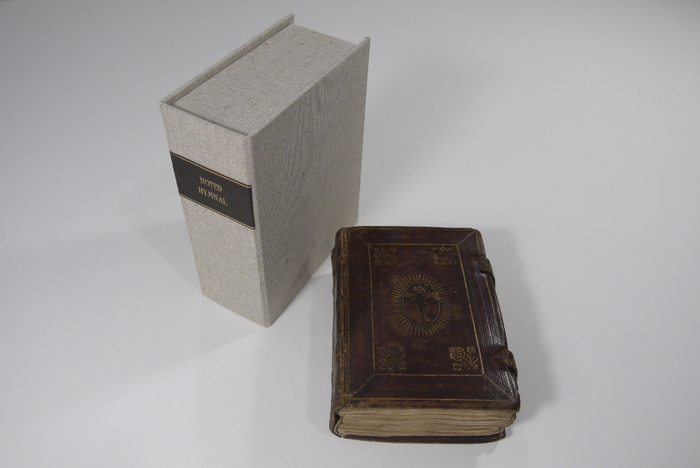Conservation
Although the manuscript was in fair condition when it was acquired, some wear was evident on the binding and text block. Jennifer Robertson, Conservator at Book and Paper Conservation Services, assessed the condition of the manuscript and put forward a treatment plan to support the long-term preservation of the manuscript. For the binding, this included strengthening the structure of the binding, repairing exposed areas of the front cover board, repairing loss along the binding edge, and treating weakened areas of the leather binding. For the text block, this included light surface cleaning of the front and back endpapers, removing graphite marks on several pages, improving the adhesion of flaking pigment and ink, and reattaching a leaf which had become detached.
Strengthening the Binding
The inside front joint, between the cover and first page, was extremely weak.
Jennifer Robertson adhered Japanese paper to the joint to strengthen the binding.
The manuscript can endure more frequent use with a strengthened binding.
Adhering Pigment and Ink
The illumination pigment on the first page was beginning to flake off.
A solution was applied by brush to the flaking pigment to enhance the adhesion.
The illumination pigment is more securely adhered to the page.
Removing Graphite Markings
Graphite markings were visible on the rear endpaper. These markings were not contemporary to the manuscript and contained no evidential value.
Jennifer Robertson removed the graphite markings with a Staedler white eraser.
The removal of the graphite markings was successful and did not disturb the media on the page.
Storage and Handling
Jennifer Robertson constructed a custom clamshell box to house the volume safely. The clamshell box was created to fit the Noted Hymnal exactly. This minimizes abrasion from movement while the manuscript is in transport.
